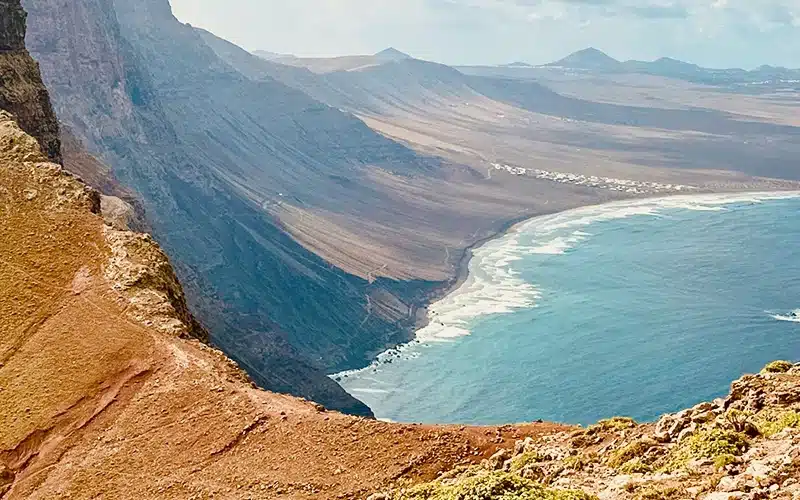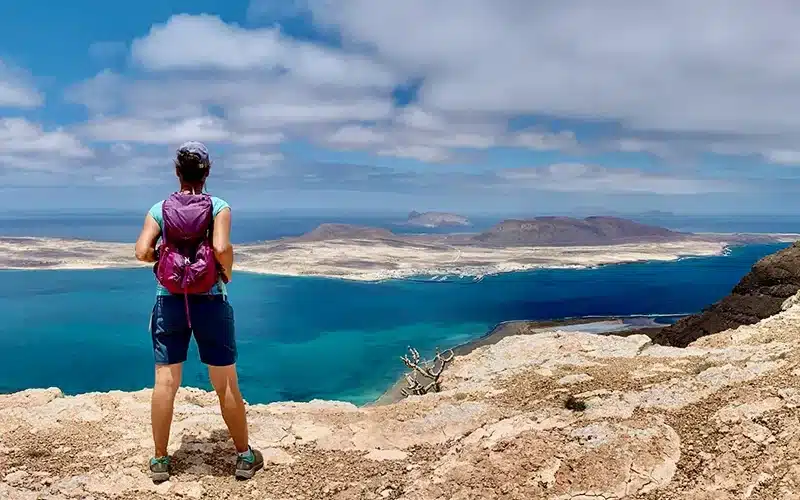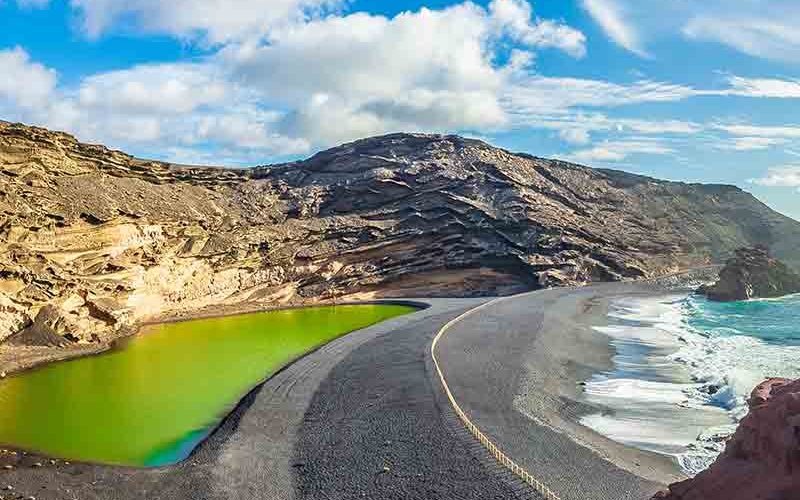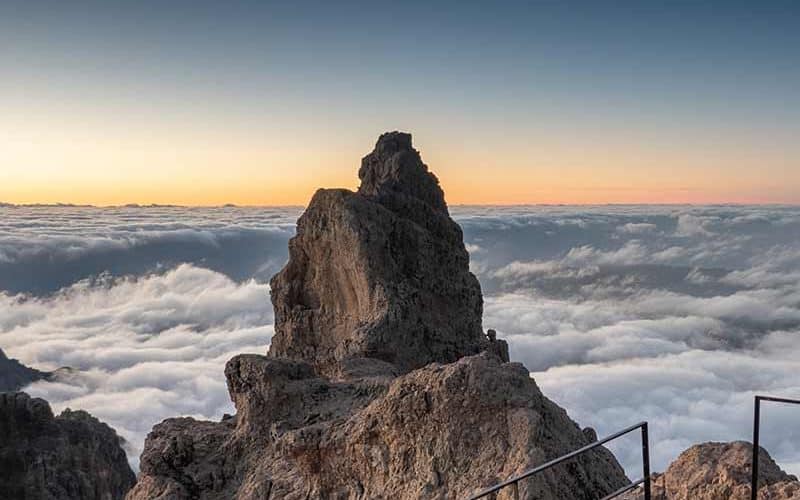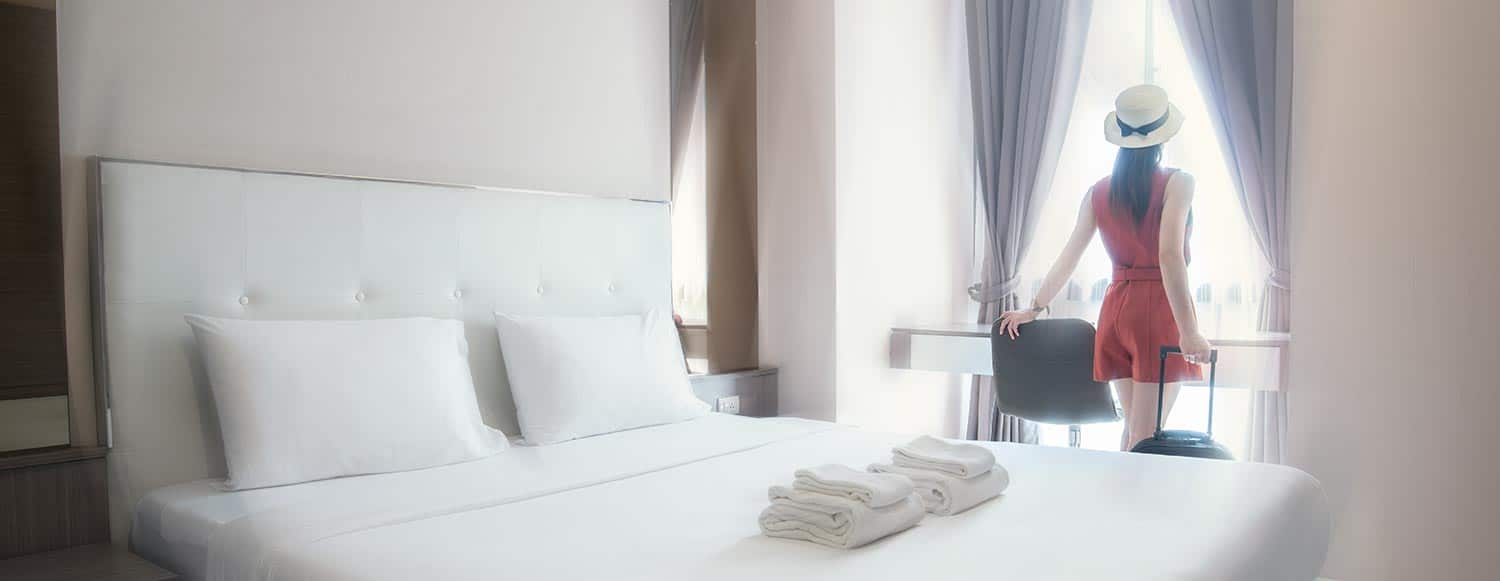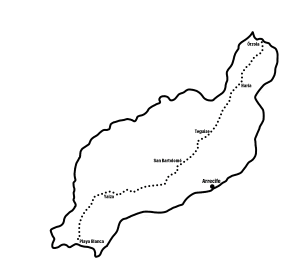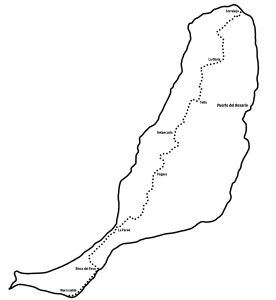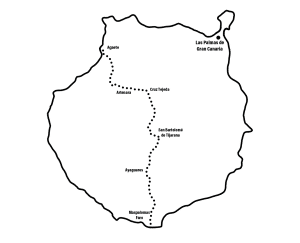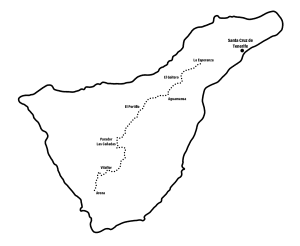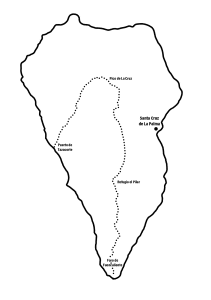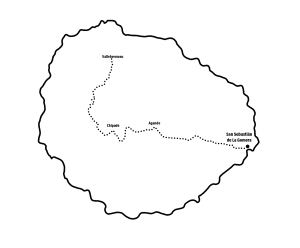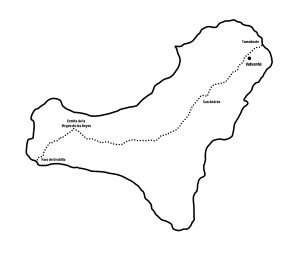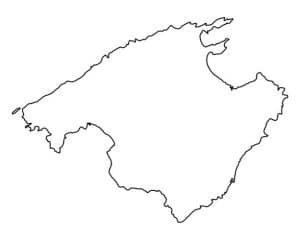Even without as much vegetation as other islands in the archipelago, Lanzarote offers some tremendously spectacular landscapes. The nickname of ‘Volcanoes island’ is given by the impressive central landscape of “Montañas de Fuego” in Timanfaya. But in the north of Lanzarote we will find the delightful palm trees valley, close to Haría. And this is where the most spectacular scenery opens up, with the island of La Graciosa and the cliffs of Famara. With an area of just 846 km2, a Lanzarote walking holidays can be a major experience.
Lanzarote Burning Island !
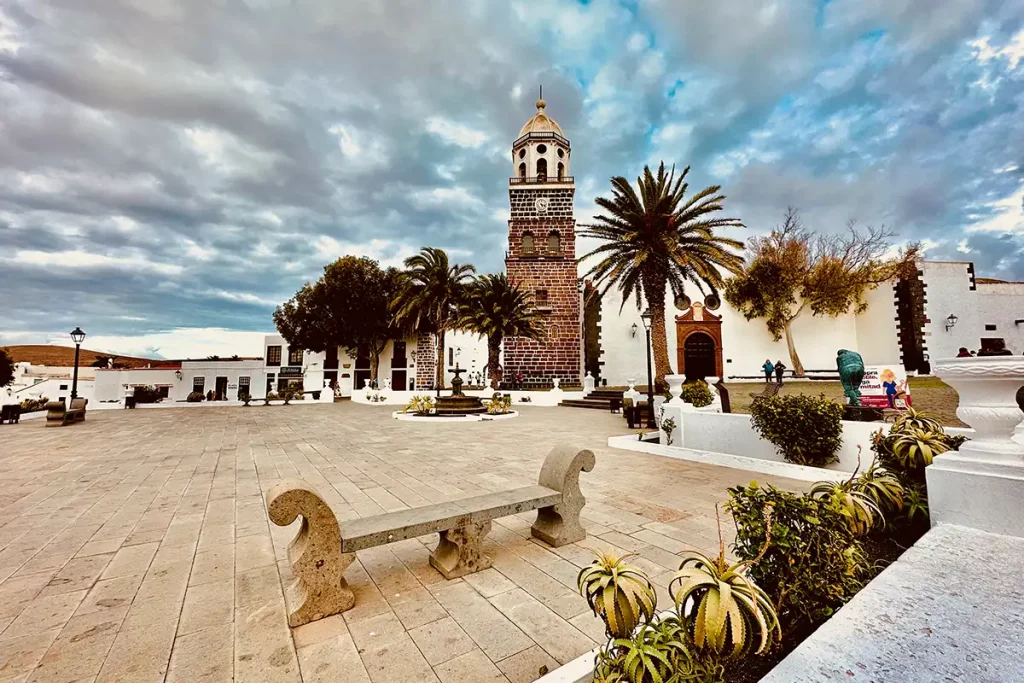
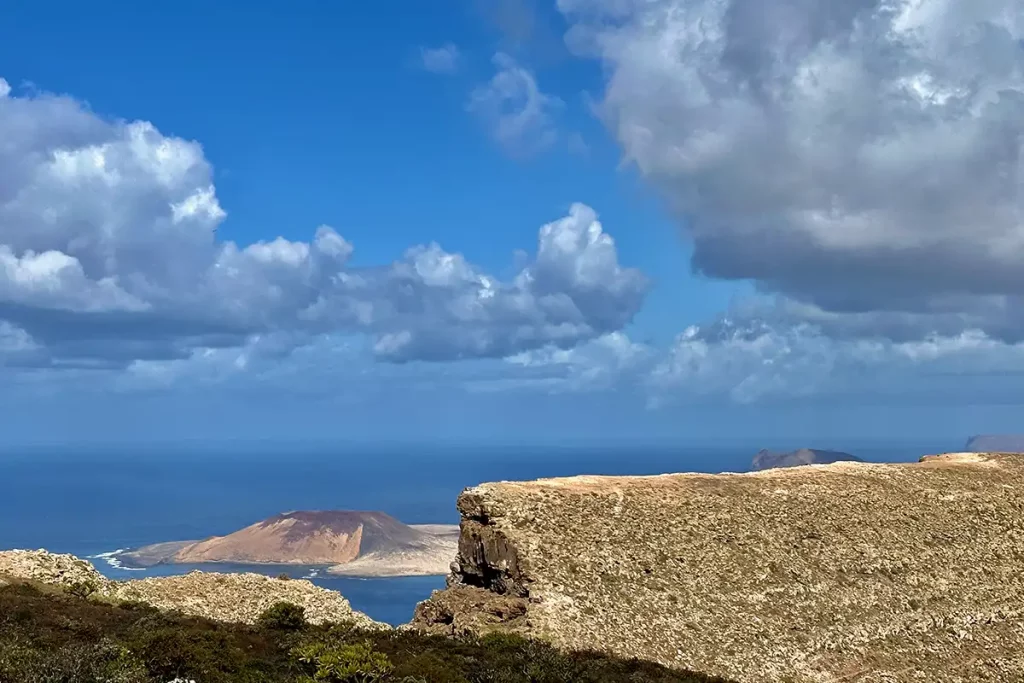
Lanzarote natural areas
places you should not miss on your Lanzarote walking holidays:
Charco de los Clicos
A lagoon inside the crater of a volcano? A green lagoon above? It is not possible, it cannot be. If it is. Yes in Lanzarote. The greenish hue is caused by the algae that live in its waters.
La Geria
Like something out of a science fiction movie, fruit trees and vines are grown in conical holes throughout this area of dark soil. Under the terrain, there is another unmissable claim; Los Naturalistas cave, 1600 km long.
Timanfaya National Park
5000 hectares of Martian landscape, reddish and practically untouched by human influence that have become one of the symbols of Lanzarote and a space protected by Unesco.
Los Ajaches
The paradise of any hiker, an Eden for geologists due to the millions of years written on its rocks. Los Ajaches is a large volcanic structure that occupies the entire south of the island. It is also its oldest region.
The volcanoes
Between Timanfaya and La Geria there is a natural park (another one) whose surface is the product of lava and the peculiar configurations that it once adopted when solidifying. Home of native birds and reptiles.
The Corona volcano (the crown)
Thousands of years contemplate the visitor from 600 meters of height of the monumental Corona volcano, declared a natural park in 1987 and turned into a natural monument in 1994.
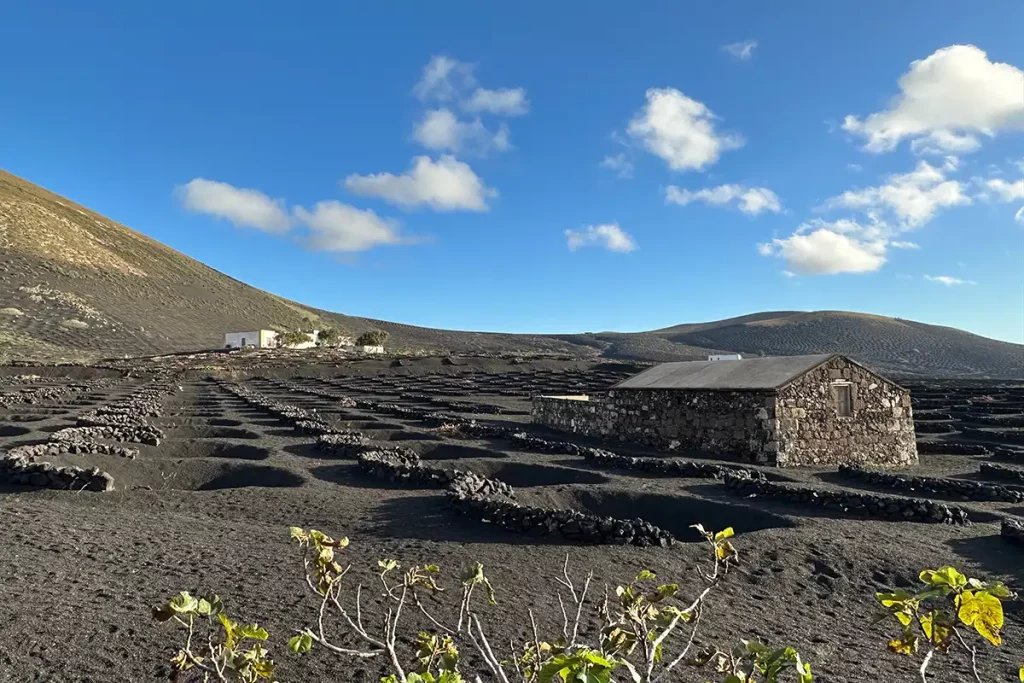
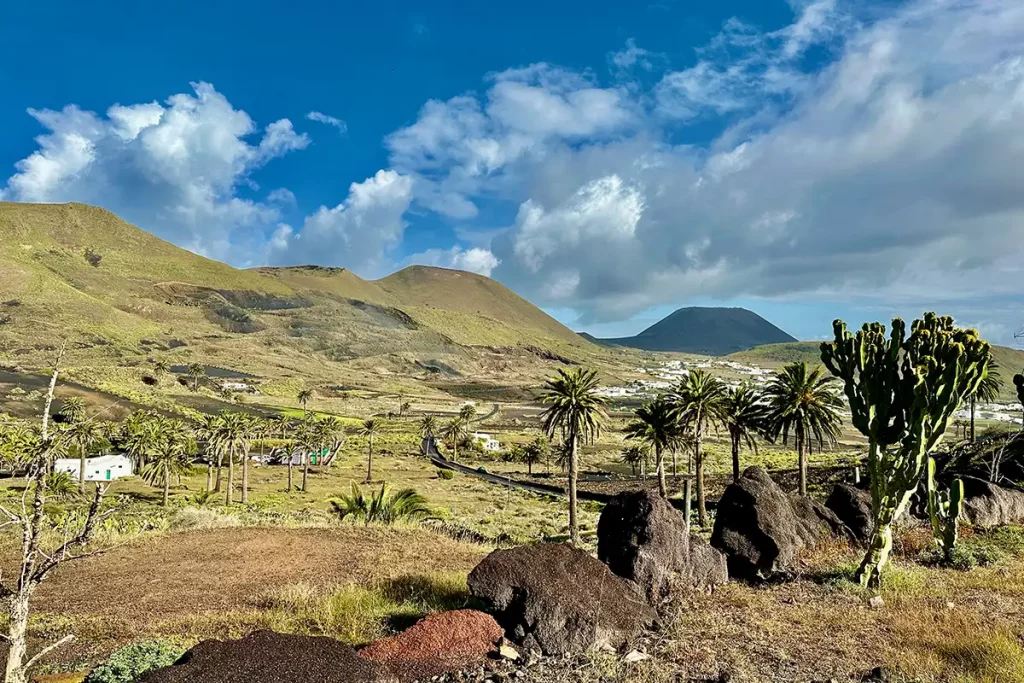
Culture and gastronomy of Lanzarote
The millenary culture of Lanzarote has been developing greatly influenced by its characteristic environment and its, also characteristics, climatic conditions. In addition to the different settlers who have inhabited the island.
Lanzarote presents a challenging territory to prosper and develop, in such a way that its inhabitants have always had to use inventiveness and creativity to make a living through agriculture, fishing, livestock or crafts. These innovative practices, adapted to the circumstances, have given rise to the most special customs, practices and products, unique and without replication anywhere else.
All this is clearly evident in its gastronomy. Wrinkled potatoes, various varieties of cheese, the typical mojo (with coriander or paprika, green or picón) or gofio, the most distinctive food of Canarian food and that was already consumed in pre-Hispanic times, based on toasted cereal flour, for general rule of thumb wheat or corn.
We cannot forget fish, which, being Lanzarote an island, is, as one might imagine, one of the most widely used raw materials in its cuisine. Sama, tuna, hake, grouper, cherne, corvina, old woman, moray eel. Fried, roasted, cooked, sautéed. Stewed in sancocho.
Regarding meats, goat meat is more popular than pork (including that of the Canarian black pig, a native breed of the archipelago) and on Lanzarote wines it would be possible to write hundreds of pages, but perhaps it is interesting to highlight the volcanic malvasia wine due to its exclusive origin and the effect it has on it.
For dessert, of course, bienmesabe. Sweet made with almonds, egg, sugar and lemon.
Enjoy your meal.
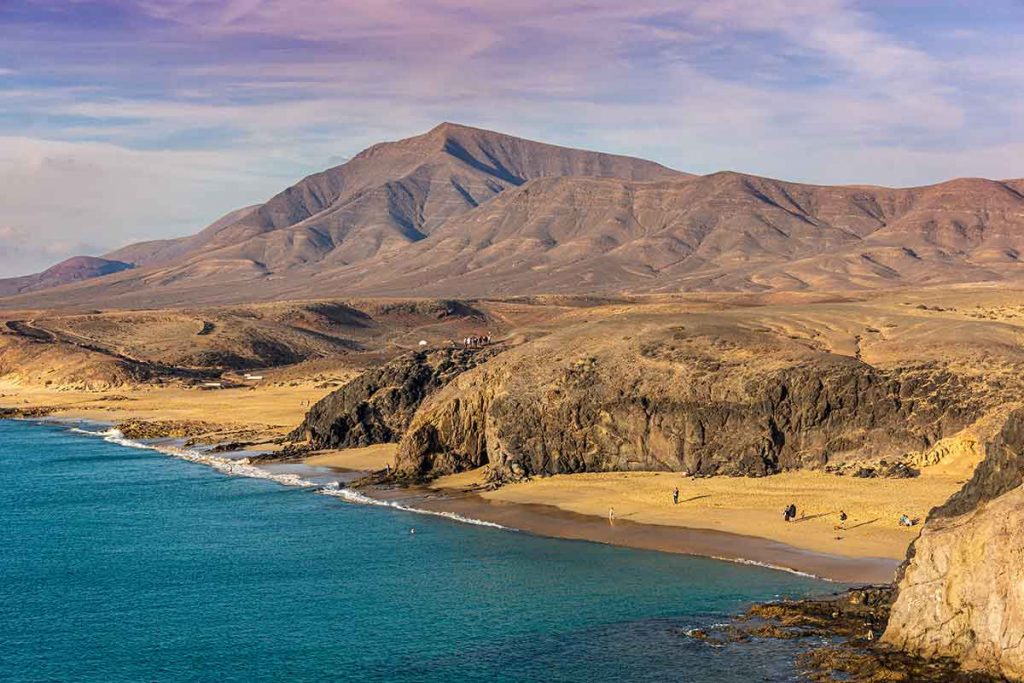
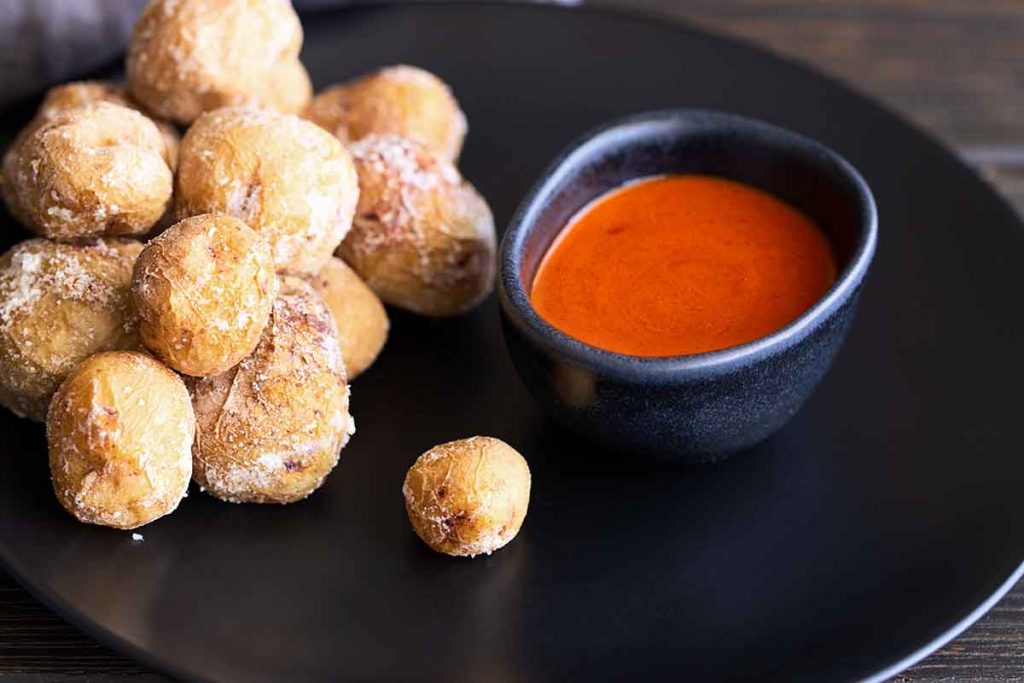

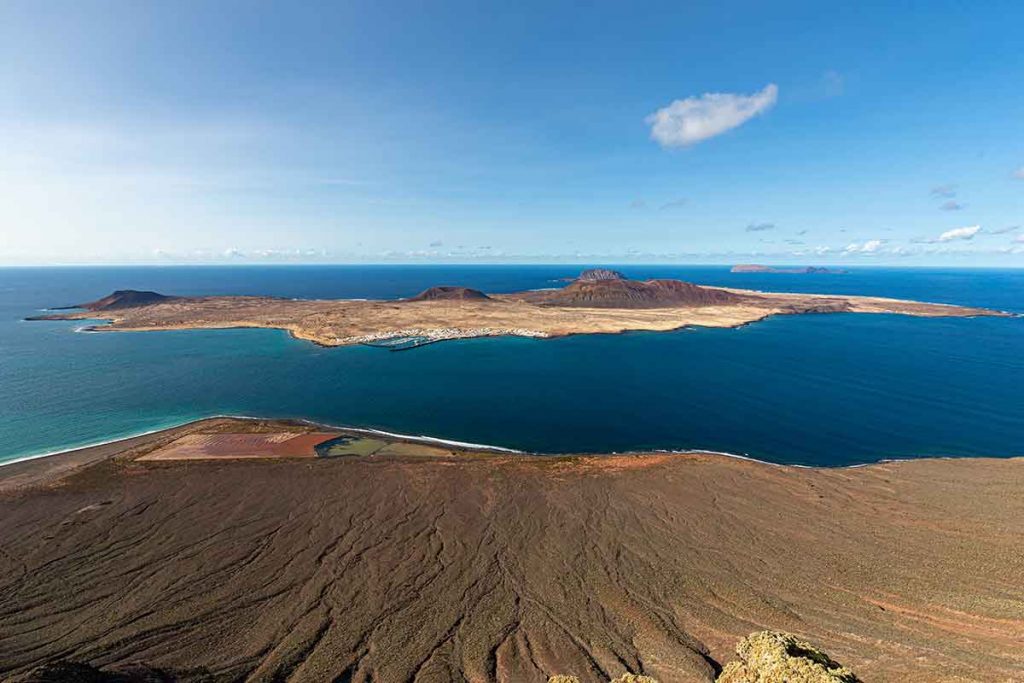
Cesar Manrique
César Manrique was a prominent artist and architect born on 24 April 1919 in Arrecife, Lanzarote, Spain, and died on 25 September 1992. His life was marked by a deep connection to his homeland, Lanzarote, one of the Canary Islands, and his love of nature and art.
He studied Fine Arts at the Real Academia de Bellas Artes de San Fernando, in Madrid. After completing his education, he travelled around Europe, where he was inspired by avant-garde and architectural art movements.
Throughout his career, Manrique excelled in various artistic disciplines, including painting, sculpture and architecture. His work often reflected his passion for nature and the integration of nature into his art.
In the 1960s, Manrique returned to his homeland, Lanzarote, and became a passionate advocate for environmental conservation and the harmonisation of tourism development with the island’s natural beauty.
César Manrique is famous for designing and developing unique architectural projects on Lanzarote, such as the Jameos del Agua (a series of volcanic caves converted into a cultural and tourist complex), the Mirador del Río (a lookout point with spectacular views) and the César Manrique Foundation (a house-museum showcasing his art and philosophy of life).
Through his work, Manrique left a lasting impact on Lanzarote and the way sustainable tourism is approached on the island. His focus on landscape conservation and the integration of architecture with nature remains an important influence in the region.
César Manrique died tragically in a car accident in 1992, but his artistic legacy and commitment to preserving the environment and culture of Lanzarote continues to be celebrated and honoured through the César Manrique Foundation and its influence on the island.
Other Artistic Centres of interest, related to Manrique’s work are:
- Jameos del Agua: Located in a series of unique volcanic caves, this centre combines natural and cultural elements to offer a unique experience. It includes an underground auditorium, a natural swimming pool, restaurants and exhibition areas.
- Mirador del Río: This viewpoint is located at the top of the cliffs of Famara, offering spectacular panoramic views of the island of La Graciosa and the Chinijo archipelago. The design of the building blends harmoniously with the natural surroundings.
- Castillo de San José: This historic castle was restored by César Manrique and now houses a contemporary art museum, which includes a collection of works by Canarian artists and temporary exhibitions.
- Monumento al Campesino: This centre pays homage to Lanzarote’s agricultural culture and features distinctive architecture, sculptures and a restaurant.
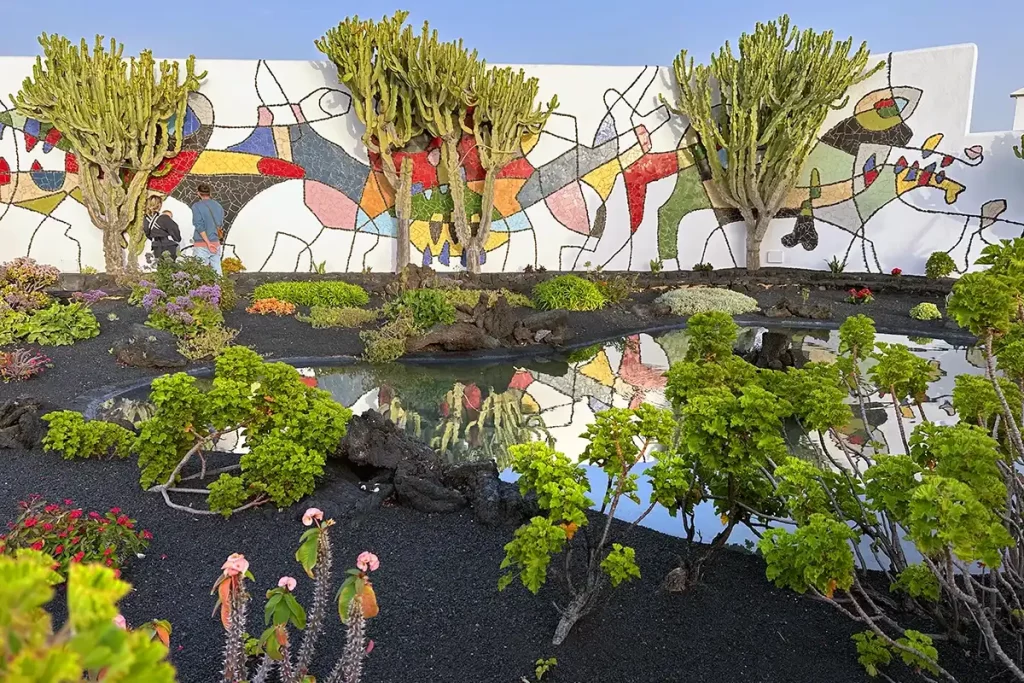
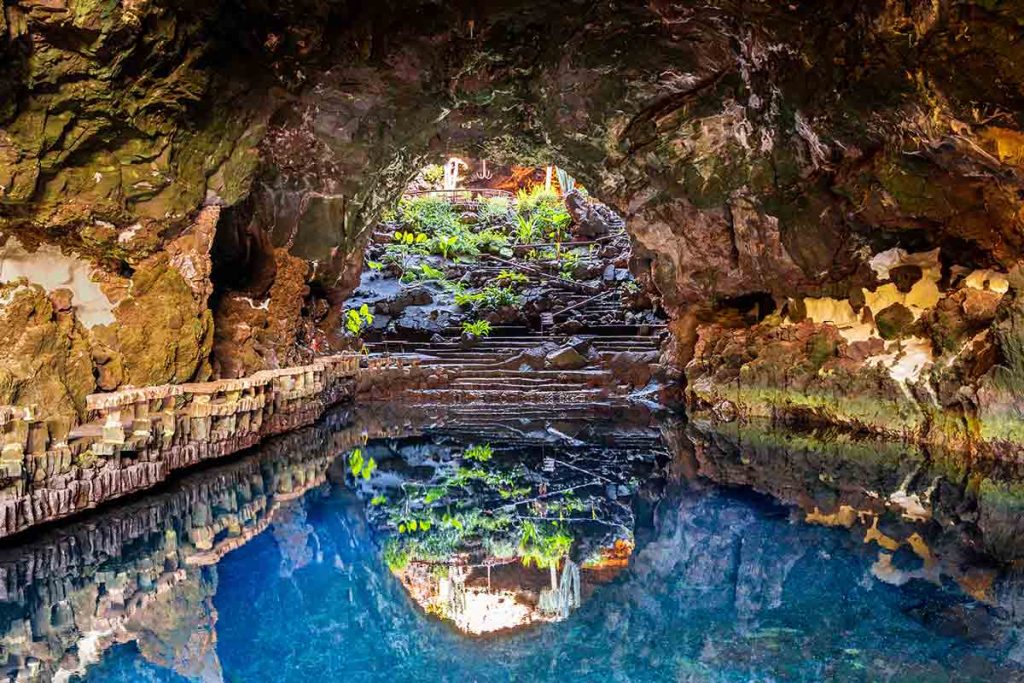
Activities in Lanzarote
Doing a Lanzarote walking holidays offers as many possibilities as the types of visitors that come to the island every year, every season. Walking holidays in spain for singles as well as Tenerife walking holidays are are in high demand
For the most intrepid and sporty people, its coasts are known throughout the world by surfers who are looking for strong emotions riding the wave, but also by more inexperienced ones who want to continue improving their technique. There are beaches for all levels.
Offshore, the transparency of the waters and the mild climate throughout the year allows diving at a level difficult to match in other areas of the planet, with 100 dive sites.
For those who seek tranquility and disconnect from daily obligations, Lanzarote is also a haven of peace. A good example of this are the Papagayo beaches, a kilometer and a half of coastline in which the finest sand gives way to a calm sea in which different shades of green and blue are mixed. And when relaxation has been enough, a trip on a catamaran or boat, a game of paddles on the sand or the most relaxed recreational sea fishing, can put the perfect finishing touch to an unforgettable day.
The options are almost limitless. From paragliding over Lanzarote to kicking the island from end to end discovering all its volcanic splendor, passing through the possibility of seeing wild dolphins in their natural environment and stopping off on an exhilarating jet ski ride. From a buggy tour to a kayak outing. From a bike route to an underwater visit to the surprising Atlantic Museum.
The combination of those earthy tones and textures with the undulating blue of the Atlantic is one of the first rewards that the traveler’s eyes meet when they arrive in Lanzarote. From here, many more await you.
Its subtropical climate with little rainfall, endows the island with mild temperatures and benign atmospheric conditions that remain with little variation throughout the year. So what is the best time to visit Lanzarote? Any. All times are good.
As if it were not enough with it alone, Lanzarote also has its own archipelago within the Canary archipelago. Completed by La Graciosa and the depopulated islets of Alegranza, Montaña Clara, Roque del Este and Roque del Oeste, which make up the Chinijo archipelago and the largest marine reserve in the European Union with 700 km². An amazing scenary for a Lanzarote walking holidays !!
our INDEPENDENT HIKING programmes:
Lanzarote SMART
436 €Lanzarote HIGHLIGHTS
805 €Our guided WALKING GROUPS in other islands:
Our small & CHARMING ACCOMMODATIONS:
see the best accommodations for your next Lanzarote walking holidays.
Do you have your OWN GROUP ?
…And if you prefer a tailor-made plan for your group that
combine different islands or visit special places
we will adapt it to your prerogatives.
Your own group? Ask us !
If you wish a tailor-made plan
for your group that combine different
islands or visit special places,
we will adapt it to your prerogatives.
Your own group? Ask us !
Recent history of Lanzarote
The recent history of Lanzarote is marked by its volcanic geology and the influence of different cultures over the last 5 centuries.
In the 15th century, Jean de Béthencourt arrived in Lanzarote and began the conquest of the island. The Guanche resistance was strong but finally defeated. Lanzarote became a possession of the Crown of Castile.
During the 16th and 17th centuries, the island suffered attacks by pirates, such as the English privateer Francis Drake. In addition, volcanic eruptions affected life on the island on several occasions.
After the eruption of the Timanfaya volcano in 1730, the island began to be depopulated due to the enormous destruction caused by this volcano. It lasted 6 years and the lava covered 30% of the whole island. Lanzarote experienced a wave of emigration to other islands or to America in search of better economic opportunities.
Throughout the 19th century, Lanzarote experienced a period of stability and economic growth, driven by agriculture and fishing. Fortifications and lighthouses were built to protect the island and guide ships.
By the 20th century, Lanzarote and the Canary Islands in general became increasingly popular tourist destinations. The construction of tourist infrastructure, such as hotels and airports, boosted the island’s economy. César Manrique played an important role in promoting sustainable tourism and preserving the island’s natural and cultural heritage.
Today, Lanzarote is known for its beautiful beaches, volcanic landscapes, vineyards, unique architecture and outdoor activities. The island has managed to maintain much of its authenticity and natural beauty while adapting to the demands of the modern tourism industry.


